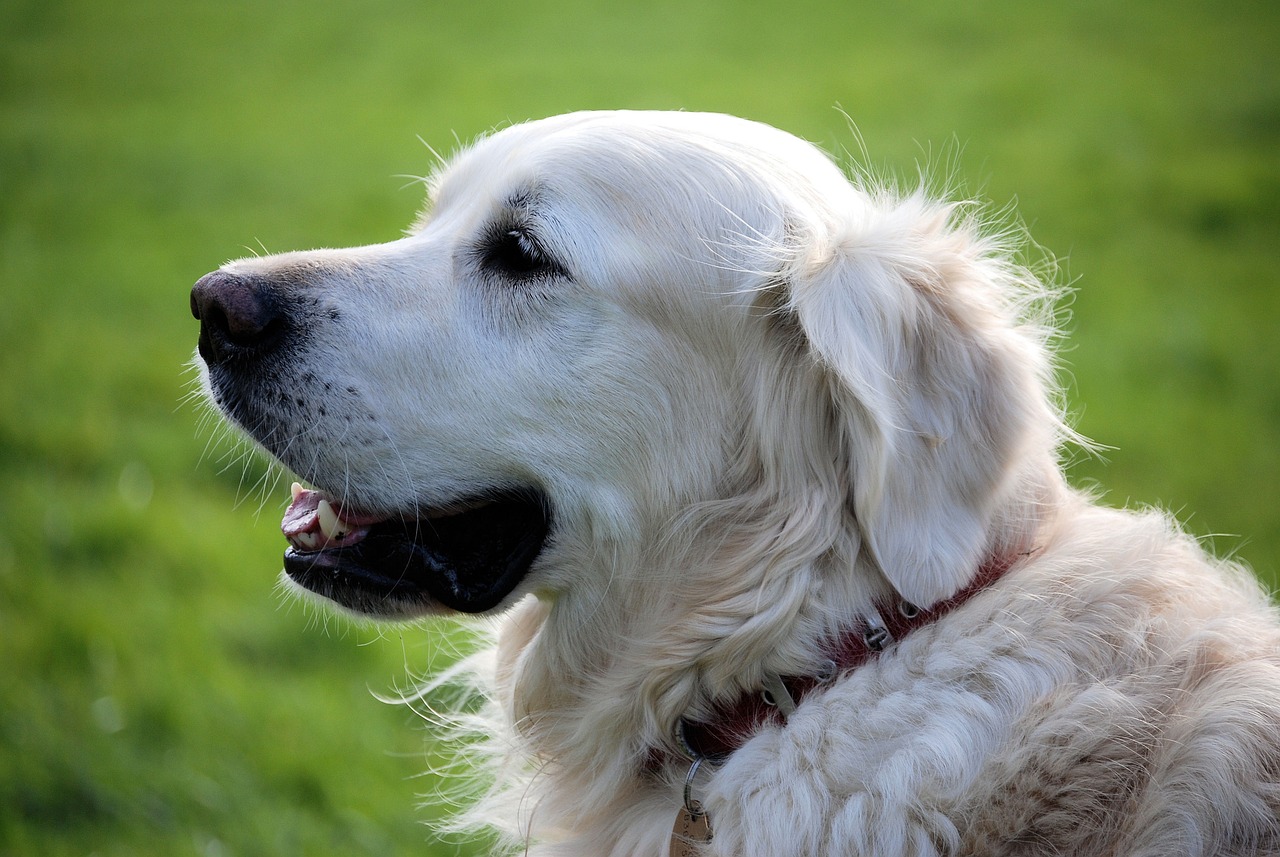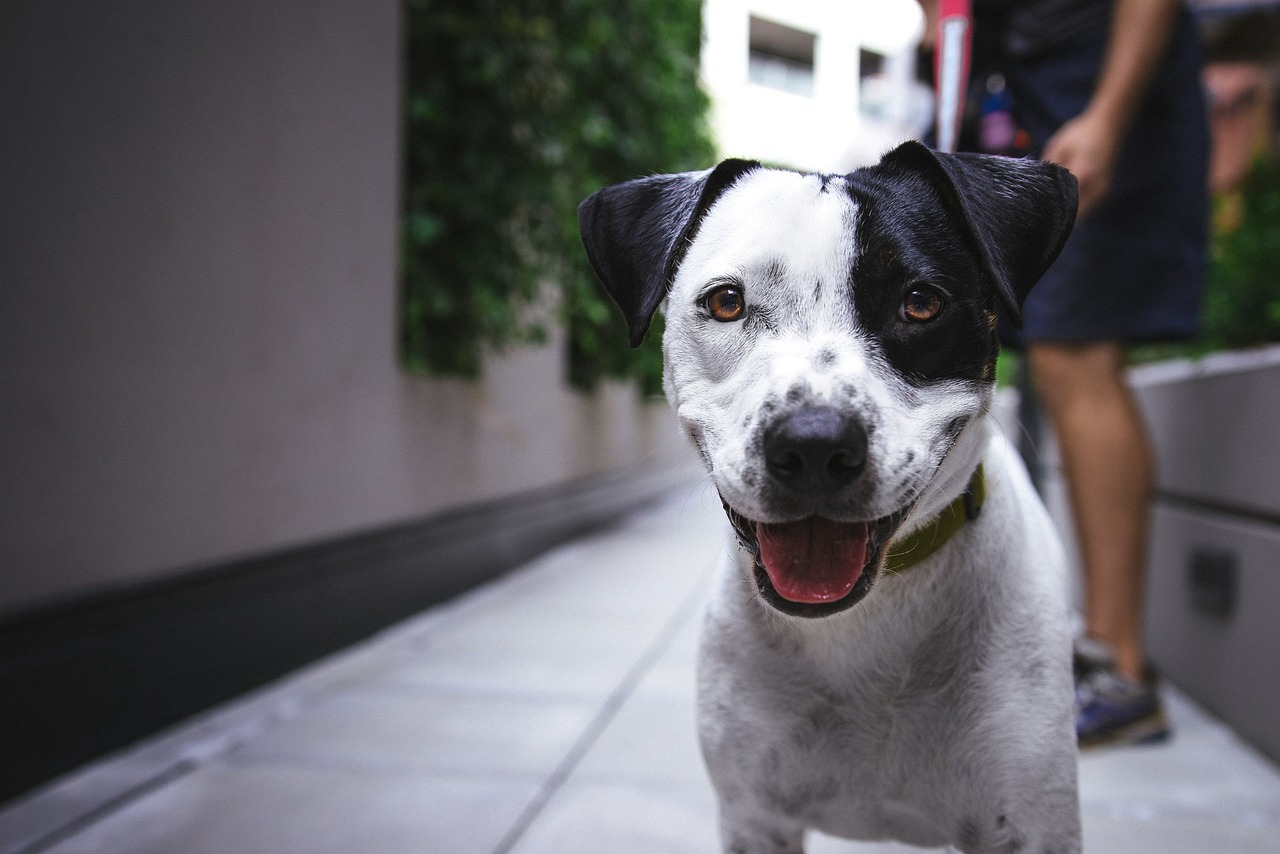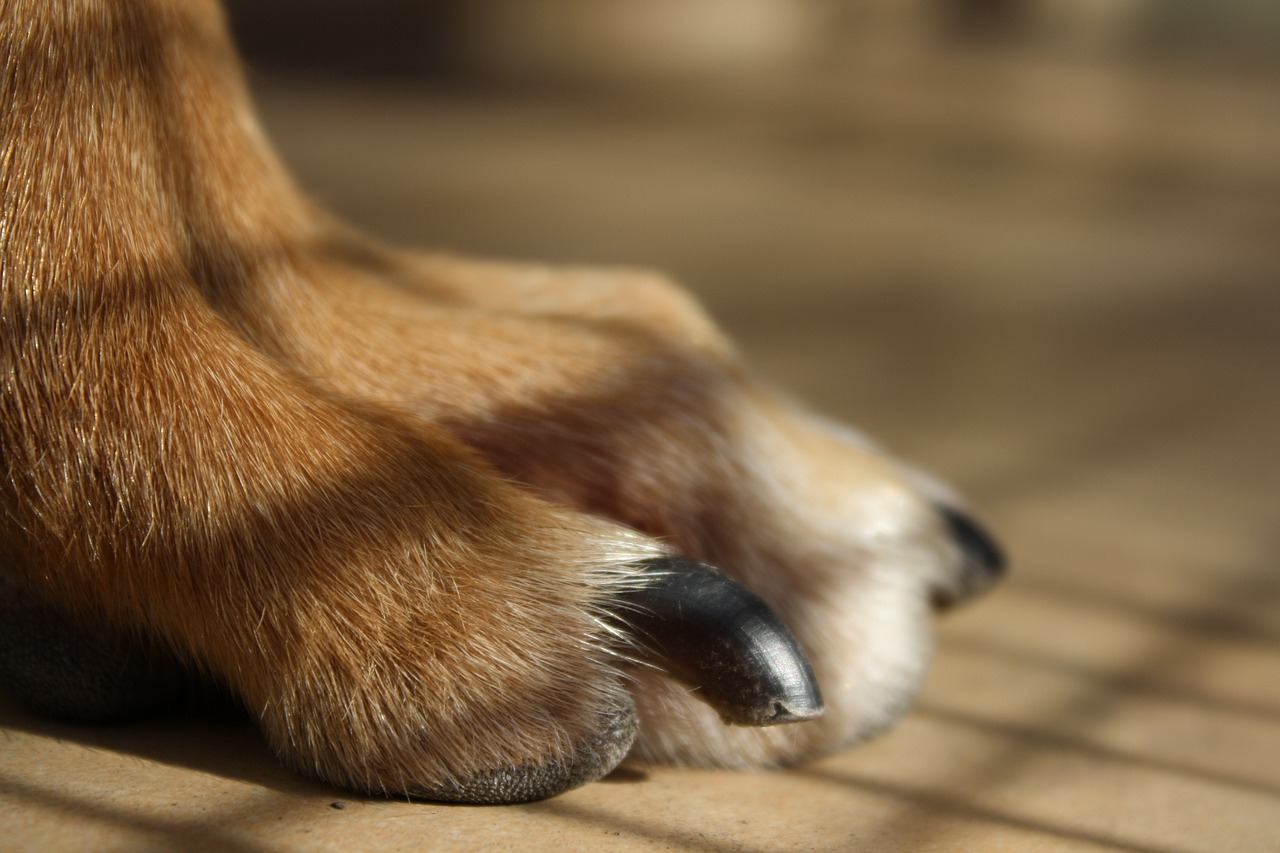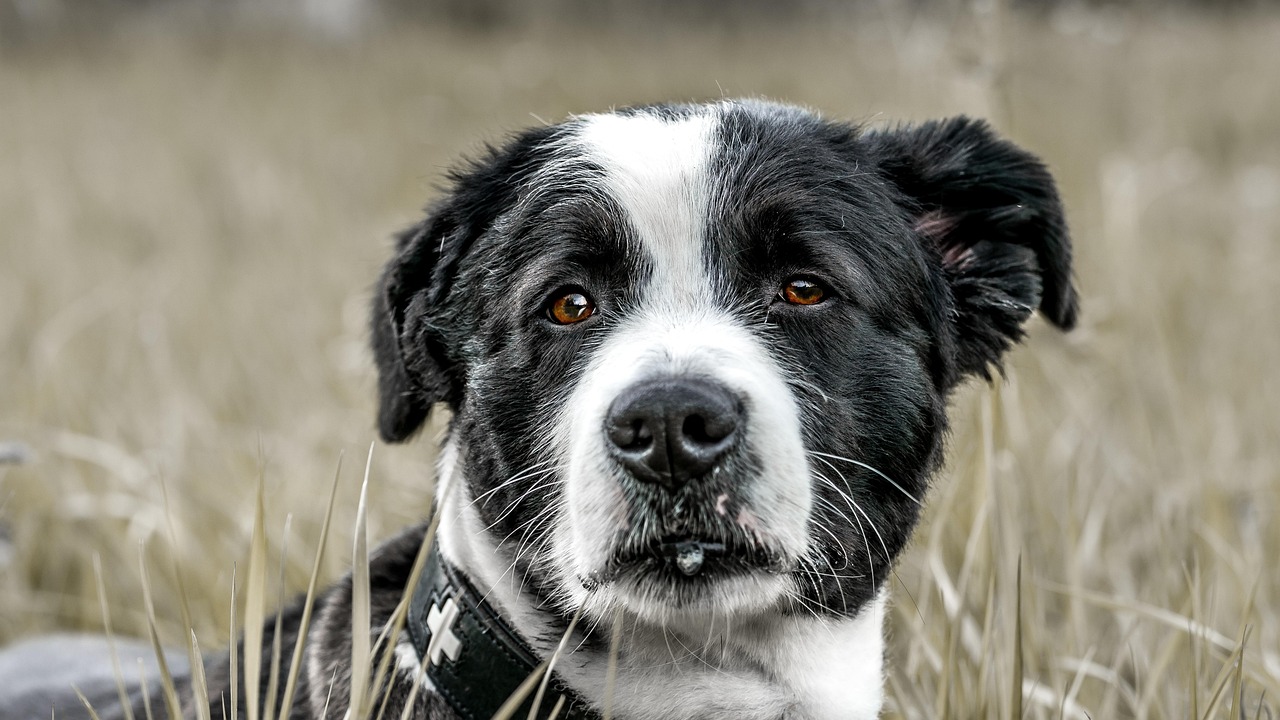This article highlights the essential components of a dog bite first aid kit, which is crucial for every pet owner. Understanding how to respond effectively to dog bites can ensure the safety and well-being of both pets and humans.
Understanding Dog Bites
Dog bites can happen unexpectedly and may result in serious injuries. Recognizing the types of bites and their potential consequences is vital for effective first aid and prevention strategies.
Why a First Aid Kit is Essential
A well-stocked first aid kit can significantly impact the management of dog bite injuries. It provides immediate care and helps reduce the risk of complications, ensuring a quicker recovery.
Types of Dog Bites
- Minor Bites: These typically cause superficial wounds and may not require extensive medical attention. However, proper cleaning and care are essential to prevent infection.
- Severe Bites: These can lead to deep punctures or lacerations, often necessitating professional medical treatment. Early recognition of these injuries is crucial for effective care.
Common Symptoms of Dog Bites
Recognizing symptoms associated with dog bites is critical for prompt treatment. Symptoms may include swelling, redness, severe pain, and bleeding.
Essential Items for Your First Aid Kit
A comprehensive first aid kit should include specific items tailored for dog bite injuries. Here’s a list of must-have supplies:
- Wound Cleaning Supplies: Antiseptic wipes and saline solution are vital for preventing infections and promoting healing.
- Bandaging Materials: Gauze and adhesive tape are crucial for protecting wounds, controlling bleeding, and providing support during the healing process.
How to Administer First Aid for Dog Bites
Knowing how to administer first aid can significantly impact recovery. Here’s a step-by-step guide:
- Initial Assessment: Assess the severity of the bite to determine the appropriate course of action.
- Cleaning the Wound: Clean the wound thoroughly with antiseptic wipes or saline solution to prevent infection.
When to Seek Professional Help
Not all dog bites can be managed at home. Understanding when to seek professional medical assistance is crucial for proper treatment:
- Signs of Infection: Look for increased redness, swelling, or pus. If these symptoms occur, consult a healthcare professional immediately.
- Severe Injuries: If the bite is severe or involves significant bleeding, seek immediate medical attention.
Preventing Dog Bites
Prevention is key in avoiding dog bites. Understanding dog behavior and implementing safety measures can significantly reduce risks for both pets and people:
- Understanding Dog Behavior: Educating yourself about dog behavior can help prevent bites by recognizing signs of aggression or fear.
- Safe Interaction Techniques: Teaching safe interaction techniques for both children and adults minimizes the risk of dog bites.
Conclusion
Being prepared with a comprehensive dog bite first aid kit is essential for every pet owner. Understanding how to respond effectively can make a significant difference in ensuring the safety and health of pets and people alike.

Understanding Dog Bites
Dog bites can occur unexpectedly and may lead to serious injuries. It is essential for pet owners and the general public to understand the different types of bites and their potential consequences. This knowledge is crucial not only for effective first aid but also for prevention strategies that can mitigate the risk of dog bites.
Types of Dog Bites
- Minor Bites: These bites usually result in superficial wounds, such as scratches or small punctures. While they may not require extensive medical attention, it is still important to clean the area properly to prevent infection.
- Severe Bites: Severe bites can cause deep punctures or lacerations that may require professional medical treatment. Recognizing these injuries early is vital for effective care and recovery.
Common Symptoms of Dog Bites
Recognizing the symptoms associated with dog bites is crucial for prompt treatment. Symptoms can range from swelling and redness to severe pain and bleeding. If you notice any of these symptoms, it’s important to take appropriate action quickly.
Importance of First Aid
A well-equipped first aid kit is essential for every pet owner. It can significantly impact the management of dog bite injuries by providing immediate care and reducing the risk of complications. Essential items include:
- Wound cleaning supplies like antiseptic wipes and saline solution.
- Bandaging materials such as gauze and adhesive tape to protect wounds.
Conclusion
Being informed about dog bites and having a comprehensive first aid kit is essential for every pet owner. Understanding how to respond effectively can make a significant difference in ensuring the safety and health of both pets and people.

Why a First Aid Kit is Essential
Having a well-stocked first aid kit is crucial for every pet owner, especially when it comes to managing injuries like dog bites. These incidents can happen unexpectedly, and being prepared can significantly influence the outcome of the situation. A first aid kit serves as the first line of defense, allowing pet owners to provide immediate care and potentially reduce the risk of complications.
When a dog bite occurs, the first response can determine the severity of the injury and the effectiveness of subsequent treatment. An adequately equipped first aid kit can help in:
- Immediate Response: Quick access to essential supplies enables pet owners to perform initial care promptly.
- Infection Prevention: Proper wound cleaning and dressing can significantly lower the chances of infection, which is a common risk after a dog bite.
- Managing Pain: Including items like antiseptic ointments can help alleviate discomfort for the injured party.
- Stabilizing the Injury: Bandaging materials can assist in controlling bleeding and protecting the wound until professional help is available.
Furthermore, maintaining a first aid kit tailored for dog bite injuries not only enhances safety but also instills confidence in pet owners. Knowing that they have the necessary tools at hand allows them to act decisively in emergencies. Regularly checking and restocking the kit ensures that all supplies are up-to-date and effective.
In conclusion, a well-equipped first aid kit is not just a collection of medical supplies; it is a vital resource that empowers pet owners to manage dog bite injuries effectively. Being prepared can make a significant difference in ensuring the health and safety of both pets and humans.
Types of Dog Bites
Understanding the different is crucial for pet owners and anyone who interacts with dogs. Dog bites can range from minor nips that cause little harm to severe injuries that can lead to significant medical complications. By recognizing the severity of a bite, you can determine the appropriate first aid steps and whether professional medical attention is necessary.
| Type of Bite | Description | First Aid Steps |
|---|---|---|
| Minor Bites | Superficial wounds that typically break the skin but do not cause deep tissue damage. |
|
| Moderate Bites | Deeper punctures that may cause more significant bleeding and require careful cleaning. |
|
| Severe Bites | Deep lacerations that can damage muscles, nerves, or blood vessels and may require stitches. |
|
Recognizing the type of bite is vital for effective treatment. Always remember, even minor bites can lead to infections if not treated properly. Therefore, having a well-stocked first aid kit and knowing how to respond can significantly improve outcomes for both pets and their owners.
Minor Bites
are a common occurrence, especially for pet owners who frequently interact with dogs. While these bites typically result in superficial wounds that may not necessitate extensive medical attention, it is crucial to understand that proper cleaning and care are vital to prevent infection and promote healing.
Minor bites usually involve small punctures or scratches that may cause minimal bleeding and discomfort. However, even seemingly insignificant injuries can lead to complications if not treated appropriately. Here’s a comprehensive guide on how to handle minor dog bites effectively:
| Step | Action |
|---|---|
| 1 | Stay Calm: Assess the situation and ensure the dog is no longer a threat. |
| 2 | Clean the Wound: Rinse the area with clean water and apply an antiseptic solution. |
| 3 | Apply a Bandage: Cover the wound with a sterile bandage to protect it from dirt and bacteria. |
| 4 | Monitor for Infection: Keep an eye on the wound for signs of infection, such as redness, swelling, or pus. |
| 5 | Seek Medical Attention if Necessary: If the wound worsens or does not improve, consult a healthcare professional. |
In addition to immediate care, educating yourself about dog behavior can help prevent bites in the future. Recognizing signs of discomfort or aggression in dogs can significantly reduce the risk of bites. Always approach dogs calmly and allow them to initiate contact.
In conclusion, while minor dog bites may not seem serious, taking the right precautions is essential for your health and well-being. By following these steps, you can ensure that minor injuries are managed effectively, reducing the risk of complications and promoting a quicker recovery.
Severe Bites
can pose significant health risks, leading to deep punctures or lacerations that often necessitate professional medical treatment. These injuries, if not addressed promptly and correctly, can result in serious complications, including infection and prolonged healing times. Understanding the implications of severe bites is essential for effective care and recovery.
Recognizing the signs of a severe bite injury is critical. Symptoms may include:
- Intense Pain: Severe bites typically cause considerable discomfort.
- Excessive Bleeding: Deep punctures may lead to significant blood loss, requiring immediate attention.
- Swelling and Redness: These are common indicators of inflammation and potential infection.
- Pus or Fluid Discharge: This could signify an infection that needs professional evaluation.
In the event of a severe bite, the first step is to maintain calmness and assess the situation. If the injury is life-threatening or involves substantial bleeding, it is crucial to seek emergency medical help immediately. While waiting for professional assistance, here are some first aid steps that can be taken:
- Apply Pressure: Use a clean cloth or bandage to apply firm pressure to the wound to control bleeding.
- Clean the Wound: If possible, gently clean the area with soap and water to reduce the risk of infection.
- Keep the Area Elevated: Elevating the injured area can help minimize swelling.
After receiving initial care, follow-up with a healthcare provider is essential. They may recommend a tetanus shot or prescribe antibiotics to prevent infection. Remember, early recognition and treatment of severe bites can be vital for effective care and recovery.
In conclusion, understanding the severity of dog bites and knowing how to respond can significantly impact health outcomes. Being prepared and informed is the best way to ensure safety for both pets and their owners.
Common Symptoms of Dog Bites
Recognizing the symptoms associated with dog bites is crucial for prompt treatment. Dog bites can result in a variety of reactions, and understanding these can significantly impact the outcome of the injury. The symptoms can range from minor signs like swelling and redness to more severe manifestations, including intense pain and bleeding.
Initially, mild symptoms such as localized swelling and redness around the bite area may appear. These signs indicate an inflammatory response, which is the body’s natural way of reacting to injury. However, it is essential to monitor these symptoms closely, as they can escalate.
As the situation progresses, severe pain may develop, often described as throbbing or persistent discomfort. This pain can be a sign of deeper tissue damage or infection. If the bite punctures the skin, there is a risk of bleeding, which can vary in severity. Minor bleeding might stop with basic first aid, while more significant bleeding may require professional medical attention.
Furthermore, bruising and increased warmth around the bite area can indicate a more severe reaction. If the bite becomes infected, symptoms such as pus, a foul odor, or fever may arise, signaling the need for immediate medical intervention.
It’s also important to note that some individuals may experience allergic reactions to dog saliva, leading to symptoms like itching, hives, or swelling beyond the bite area. Recognizing these symptoms promptly can be crucial in preventing further complications.
In summary, being aware of the is essential for effective treatment. Early recognition and response can significantly improve recovery outcomes and ensure safety for both the victim and the dog involved.

Essential Items for Your First Aid Kit
A well-prepared first aid kit is crucial for managing dog bite injuries effectively. Having the right supplies on hand can help you respond promptly and appropriately, ensuring the safety and well-being of both you and your pet. Below is a detailed list of essential items that should be included in your dog bite first aid kit:
- Antiseptic Wipes: These are vital for cleaning wounds to prevent infections. Make sure to choose wipes that are safe for both humans and pets.
- Saline Solution: A sterile saline solution is excellent for rinsing out wounds and debris, promoting a clean healing environment.
- Gauze Pads: Use these to cover the wound and absorb any bleeding. They come in various sizes, so having a selection is beneficial.
- Adhesive Tape: This is essential for securing gauze pads in place. Ensure it is hypoallergenic to avoid skin irritation.
- Antibiotic Ointment: Applying a thin layer of antibiotic ointment can help prevent infection after cleaning the wound.
- Scissors: A pair of scissors can be useful for cutting gauze or tape to the desired length.
- Disposable Gloves: Wearing gloves while treating a bite can help prevent the spread of bacteria and protect both you and the injured party.
- Cold Pack: A cold pack can help reduce swelling and alleviate pain after a bite. Always keep one in your kit for immediate use.
- Pain Relievers: Over-the-counter pain relievers can be helpful for managing discomfort. Ensure they are suitable for pets if you plan to use them.
- Emergency Contact Numbers: Keep a list of local veterinarians and emergency clinics for quick access in case professional help is needed.
By ensuring your first aid kit is well-equipped with these essential items, you can be more confident in your ability to handle dog bite injuries effectively. Regularly check and replenish your supplies to maintain readiness.
Wound Cleaning Supplies
When it comes to treating dog bite wounds, are absolutely essential. Ensuring proper cleaning of the affected area is crucial in preventing infections and promoting healing. Here are some key items that every dog bite first aid kit should include:
- Antiseptic Wipes: These are pre-moistened towelettes that can quickly clean the wound and surrounding skin. They help remove dirt and bacteria, reducing the risk of infection.
- Saline Solution: A sterile saline solution is ideal for flushing out wounds. It helps to gently cleanse the area without causing irritation.
- Hydrogen Peroxide: While effective in cleaning, it should be used cautiously, as it can also damage healthy tissue. It’s best for initial cleaning of the wound.
- Antibiotic Ointment: After cleaning, applying a thin layer of antibiotic ointment can provide an additional barrier against infection.
- Gauze Pads: These are essential for covering the wound after cleaning. They protect the area from further injury and contamination.
Using these supplies correctly can significantly impact the healing process. Here’s a brief overview of how to effectively clean a dog bite wound:
1. Assess the wound and determine its severity.2. Use antiseptic wipes or saline solution to clean the area thoroughly.3. Apply antibiotic ointment to the cleaned wound.4. Cover the wound with a gauze pad and secure it with adhesive tape.5. Monitor the wound for signs of infection, such as increased redness or swelling.
In conclusion, having the right in your dog bite first aid kit is indispensable. These items not only facilitate immediate care but also play a vital role in ensuring a smoother recovery process.
Bandaging Materials
are essential components in the management of wounds, especially in cases of injuries such as dog bites. These materials, including gauze and adhesive tape, play a crucial role in protecting the affected area, promoting healing, and preventing infections.
When a dog bite occurs, the immediate response is vital. Using appropriate bandaging materials can help control bleeding and provide necessary support to the injured site. Here’s a detailed look at the importance and types of bandaging materials:
- Gauze Pads: These are absorbent and can be used to cover the wound, helping to soak up any blood and protect the area from contaminants.
- Adhesive Tape: This is used to secure the gauze in place, ensuring it remains intact and provides a barrier against dirt and bacteria.
- Elastic Bandages: These can provide additional support and compression, which is particularly useful for larger wounds or areas that require immobilization.
- Antiseptic Wipes: While not a bandaging material per se, these are crucial for cleaning the wound before applying gauze to prevent infection.
Proper bandaging techniques are equally important. Here are some tips:
1. Clean the wound thoroughly with antiseptic wipes.2. Apply a sterile gauze pad directly over the wound.3. Use adhesive tape to secure the gauze, ensuring it is snug but not too tight.4. If necessary, wrap an elastic bandage around the area for added support.5. Monitor the wound for signs of infection, such as increased redness or swelling.
In conclusion, having the right in your first aid kit is essential for effectively managing dog bites and other injuries. By understanding how to use these materials properly, pet owners can contribute significantly to the healing process and ensure a safer environment for their pets.

How to Administer First Aid for Dog Bites
Knowing how to effectively administer first aid for dog bites is crucial for ensuring a swift recovery. Dog bites can happen unexpectedly, and the initial response can significantly influence the healing process. Here’s a detailed step-by-step guide on how to treat dog bite injuries effectively.
Step 1: Initial Assessment
The first action is to assess the severity of the bite. Determine if the injury is minor or severe:
- Minor Bites: These typically involve superficial wounds that may require basic care.
- Severe Bites: These can result in deep punctures or lacerations, necessitating professional medical attention.
Step 2: Cleaning the Wound
Cleaning the wound is vital to prevent infection. Follow these steps:
- Use antiseptic wipes or a saline solution to gently cleanse the area around the bite.
- Ensure that all dirt and debris are removed to promote healing.
Step 3: Control Bleeding
If the bite is bleeding, apply gentle pressure using a clean cloth or gauze. If bleeding persists, elevate the wound above the heart level until the bleeding stops.
Step 4: Apply a Bandage
Once the bleeding has stopped, cover the wound with a sterile bandage. Use gauze and adhesive tape to secure it in place, ensuring it is not too tight to restrict circulation.
Step 5: Monitor for Infection
After administering first aid, keep an eye on the wound for signs of infection, such as:
- Increased redness or swelling
- Pus or unusual discharge
- Fever or increased pain
Step 6: When to Seek Professional Help
If the bite is severe, or if you notice any signs of infection, it is crucial to seek professional medical assistance immediately. Proper treatment can prevent complications and promote better recovery.
In conclusion, being prepared and knowing how to administer first aid for dog bites can significantly impact recovery. Always remain calm and act swiftly to ensure the best possible outcome for both the victim and the dog involved.
Initial Assessment
When it comes to dealing with dog bites, the is a critical step that can greatly influence the outcome of the injury. Understanding how to evaluate the severity of the bite is essential for determining the appropriate course of action. Here’s how to effectively assess the situation:
- Examine the Wound: Look closely at the bite area. Check for any visible damage, such as puncture wounds, lacerations, or abrasions. Minor bites may only cause superficial injuries, while severe bites could penetrate deeper tissues.
- Assess Bleeding: Pay attention to the amount of bleeding. A small amount of blood may indicate a minor injury, whereas heavy bleeding or pulsating blood flow suggests a more serious wound that may require immediate medical attention.
- Check for Signs of Infection: Although this may not be immediately visible, be aware of symptoms like swelling, redness, or warmth around the bite area. These signs may develop over time and indicate the need for professional care.
- Evaluate Pain Level: Ask the affected person to describe their pain. Severe pain can be a sign of deeper tissue damage and may necessitate further evaluation.
- Consider the Dog’s Behavior: Understanding the circumstances surrounding the bite is also crucial. Was the dog acting aggressively? Was it provoked? This context can help determine the risk of future incidents.
Once you have assessed the bite, you can make an informed decision about the next steps. If the injury appears to be minor, basic first aid measures such as cleaning the wound and applying a bandage may suffice. However, if the bite is deemed severe, seeking professional medical assistance is paramount to ensure proper treatment and prevent complications.
In conclusion, conducting a thorough initial assessment of a dog bite is vital for determining the severity of the injury and deciding on the necessary care. By following these guidelines, you can take appropriate action to ensure the safety and health of the affected individual.
Cleaning the Wound
When it comes to treating a dog bite, thorough wound cleaning is absolutely essential in preventing infection. A dog bite can introduce harmful bacteria into the skin, which may lead to serious complications if not addressed promptly. Therefore, it is critical to take the right steps immediately after a bite occurs.
To begin, gather your supplies. You will need:
- Antiseptic Wipes: These are pre-moistened wipes that contain antiseptic agents, which can help eliminate bacteria from the surface of the skin.
- Saline Solution: A sterile saline solution is ideal for rinsing the wound. It helps to flush out debris and bacteria without causing irritation.
- Clean Cloth or Gauze: A clean cloth or sterile gauze is necessary to dab the area dry after cleaning.
Once you have your supplies ready, follow these steps:
- Assess the Wound: Before cleaning, evaluate the severity of the bite. If it appears deep or is actively bleeding, seek professional medical help immediately.
- Rinse the Area: Use the saline solution to gently rinse the wound. This will help remove any dirt or saliva that may have entered the puncture.
- Apply Antiseptic: After rinsing, use the antiseptic wipes to clean the surrounding area. Be sure to cover a larger area than just the wound itself to prevent infection.
- Dry the Area: Gently pat the area dry with a clean cloth or gauze. Avoid rubbing, as this can further irritate the wound.
- Cover the Wound: If necessary, apply a sterile bandage to protect the area from further injury or contamination.
Remember, even if the wound seems minor, monitor it closely for any signs of infection, such as increased redness, swelling, or discharge. If you notice any of these symptoms, consult a healthcare professional promptly. Taking these steps can significantly reduce the risk of complications and promote faster healing.

When to Seek Professional Help
When it comes to dog bites, knowing when to seek professional help is essential for ensuring proper treatment and care. While some minor bites can be managed at home, others may require immediate medical attention to prevent complications and promote healing.
Recognizing the Severity of the Bite
Understanding the severity of a dog bite is crucial. Minor bites may cause only superficial wounds, which can often be treated with basic first aid. However, severe bites can lead to deep punctures, lacerations, or significant bleeding, necessitating professional evaluation. If you notice excessive bleeding, deep wounds, or if the bite is on a sensitive area of the body, it is vital to seek medical assistance promptly.
Signs of Infection
After a dog bite, it is important to monitor the wound for signs of infection. Symptoms such as increased redness, swelling, warmth, or discharge from the wound should not be ignored. If these symptoms arise, consult a healthcare professional immediately to receive appropriate treatment.
Potential for Rabies
If the dog that bit you is unknown or unvaccinated, you may also need to consider the risk of rabies. This is a serious viral infection that can be fatal if not treated promptly. In such cases, seeking medical help is not just advisable; it is essential.
Emotional and Psychological Impact
In addition to physical injuries, dog bites can also have emotional and psychological effects. If you find yourself feeling anxious or fearful after an incident, reaching out to a mental health professional can be beneficial. Addressing these feelings is important for your overall well-being.
Conclusion
In summary, while some dog bites may be treated at home, it is crucial to understand when to seek professional help. Recognizing the signs of severe injuries, infection, and the potential for rabies can make a significant difference in the outcome of the injury. Always err on the side of caution and consult a healthcare professional when in doubt.
Signs of Infection
are critical indicators that should never be overlooked, especially in the context of dog bites. When a dog bite occurs, the immediate response is essential for ensuring proper healing. However, even with the best first aid, infections can still develop. Therefore, it is vital to be vigilant and monitor the affected area closely for any changes.
Infection can manifest through several symptoms, and recognizing them early can significantly influence recovery outcomes. Here are some key signs to watch for:
- Increased Redness: If the skin around the bite becomes increasingly red, this could indicate an infection. Redness that spreads beyond the initial wound site is particularly concerning.
- Swelling: While some swelling is normal after a bite, excessive swelling or a marked increase in size can be a sign of infection. Pay attention to the degree of swelling and its duration.
- Pus or Discharge: The presence of pus or any unusual discharge from the wound is a clear sign that an infection may be present. This discharge may be yellow, green, or even foul-smelling.
- Increased Pain: If the pain intensifies rather than diminishes over time, this could indicate that the wound is becoming infected. A sudden spike in pain levels is a red flag.
- Fever: Systemic symptoms such as fever can also occur, signaling that the body is fighting an infection. If a fever develops, it is crucial to seek medical attention.
If you notice any of these symptoms, it is essential to consult a healthcare professional immediately. Early intervention can prevent complications and promote faster healing. Infections can escalate quickly and may require antibiotics or other medical treatments to resolve.
In conclusion, being aware of the signs of infection not only aids in effective first aid but also ensures that any potential complications are addressed promptly. Always prioritize health and safety by seeking professional help when necessary.
Severe Injuries
When dealing with dog bites, it’s vital to understand that not all injuries are created equal. can pose serious health risks and require immediate medical intervention. If you encounter a situation where a dog bite results in significant bleeding or deep tissue damage, it is crucial to act swiftly.
The first step in addressing a severe dog bite is to assess the extent of the injury. Look for signs such as:
- Deep puncture wounds
- Excessive bleeding
- Visible muscle or bone
- Severe pain or swelling
If any of these symptoms are present, do not hesitate to seek immediate medical attention. Professional care is essential to prevent complications such as infections, which can arise from bacteria entering the body through the wound. Medical professionals can provide necessary treatments, including:
- Wound cleaning and debridement
- Administering antibiotics
- Stitches or staples for deep lacerations
- Tetanus shots if necessary
Moreover, it’s important to document the incident. Take photographs of the injury and note the circumstances surrounding the bite, including details about the dog and its owner if possible. This information can be crucial for medical personnel and, if necessary, for legal purposes.
In summary, if you or someone else suffers a severe dog bite, do not delay in seeking professional help. Timely intervention can significantly reduce the risk of serious complications and promote a better recovery outcome.

Preventing Dog Bites
Preventing dog bites is essential for ensuring the safety of both humans and dogs. Understanding dog behavior and implementing effective safety measures can significantly reduce the risk of bites. Here, we explore various strategies to prevent dog bites and promote a harmonious relationship between pets and people.
- Educate Yourself on Dog Behavior: Understanding canine body language is crucial. Dogs communicate their feelings through posture, facial expressions, and vocalizations. Recognizing signs of stress or aggression, such as growling or baring teeth, can help you avoid potentially dangerous situations.
- Socialization: Properly socializing your dog from a young age is vital. Exposing them to various environments, people, and other animals can help them become well-adjusted and less likely to react fearfully or aggressively.
- Teach Safe Interaction: It’s important to educate both children and adults on how to interact safely with dogs. Always approach a dog calmly, ask for permission from the owner, and avoid sudden movements that may startle the animal.
- Supervision: Always supervise interactions between dogs and young children. Children may not understand how to behave around dogs, which can lead to unintentional provocation.
- Respect Personal Space: Dogs, like humans, need their personal space. Teach others to respect this space and avoid crowding or cornering a dog, which can lead to anxiety and defensive behavior.
- Proper Training: Enroll your dog in obedience classes to ensure they respond to commands and understand acceptable behaviors. A well-trained dog is less likely to bite.
In conclusion, understanding dog behavior and implementing effective safety measures are crucial in preventing dog bites. By educating yourself and others, socializing pets appropriately, and promoting safe interactions, you can significantly reduce the risks for both dogs and people.
Understanding Dog Behavior
is crucial for every pet owner. By educating yourself about the various aspects of canine behavior, you can significantly reduce the risk of dog bites. Dogs communicate through body language and vocalizations, and understanding these signals can help you respond appropriately in different situations.
Many dog bites occur when a dog feels threatened or scared. Recognizing the signs of aggression or fear can aid in avoiding potential confrontations. For instance, a dog that is growling, showing its teeth, or has stiff body posture may be feeling defensive. Similarly, a dog that is cowering, tucking its tail, or avoiding eye contact may be fearful and could react unpredictably if approached.
- Common Signs of Aggression:
- Growling or barking aggressively
- Showing teeth or snarling
- Stiff body posture
- Direct staring or lunging
- Common Signs of Fear:
- Cowering or hiding
- Tail tucked between legs
- Avoiding eye contact
- Excessive licking of lips
By learning to recognize these signs, you can take steps to prevent a potential bite. For instance, if you see a dog displaying signs of aggression, it’s best to give it space and avoid direct interaction. Similarly, if a dog appears fearful, approaching it calmly and softly can help ease its anxiety.
Moreover, educating others, especially children, about safe interactions with dogs is essential. Teaching them to approach dogs gently and to respect their space can further reduce the likelihood of bites. Always supervise interactions between dogs and young children to ensure safety.
In conclusion, understanding dog behavior not only helps prevent bites but also fosters a better relationship between humans and dogs. By being observant and proactive, you can create a safer environment for both pets and people.
Safe Interaction Techniques
are vital for ensuring a harmonious relationship between humans and dogs. Implementing these techniques can significantly reduce the risk of dog bites, especially among children and inexperienced adults. Understanding how to interact safely with dogs is a crucial aspect of responsible pet ownership.
When approaching a dog, it’s important to follow some basic guidelines. First, always ask the owner for permission before petting a dog. This respects the dog’s space and the owner’s wishes. Once you have permission, approach the dog calmly and slowly. Sudden movements can startle the animal, increasing the likelihood of a negative reaction.
- Let the Dog Initiate Contact: Allow the dog to come to you rather than reaching out immediately. This gives the dog a chance to feel comfortable and assess the situation.
- Use a Soft Voice: Speaking in a gentle tone can help soothe the dog. Avoid loud noises or sudden exclamations that may frighten the animal.
- Pet the Dog Appropriately: Focus on areas dogs generally enjoy being petted, such as the back or side. Avoid touching the head or tail until you are sure the dog is comfortable with your presence.
Educating children about safe interaction with dogs is equally important. Teach them to:
- Respect Boundaries: Children should learn to recognize when a dog wants to be left alone, such as when it is eating or sleeping.
- Stay Calm: Running or screaming can provoke a dog. Encourage children to remain calm and still if approached by a dog.
- Report Aggressive Behavior: Instruct children to inform an adult if they see a dog acting aggressively or if they feel uncomfortable around a dog.
In summary, teaching safe interaction techniques is a proactive measure that helps minimize dog bite incidents. By fostering a respectful and understanding environment between dogs and humans, we can enhance the safety and enjoyment of pet ownership for everyone involved.

Conclusion
Dog Bite First Aid Kit – Essentials Every Pet Owner Needs
Being prepared with a comprehensive dog bite first aid kit is essential for every pet owner. Understanding how to respond effectively can make a significant difference in ensuring the safety and health of both pets and people. Dog bites can happen unexpectedly, and the injuries they cause can range from minor wounds to severe trauma. Having the right supplies on hand allows for prompt and effective care, minimizing the risk of complications.
Understanding Dog Bites
Dog bites can occur in various situations, often leading to injuries that require immediate attention. There are different types of dog bites, including:
- Minor Bites: These usually involve superficial wounds that may not need extensive medical care but still require proper cleaning and monitoring.
- Severe Bites: These can result in deep punctures or lacerations, often necessitating professional medical treatment. Recognizing the severity of the bite is crucial for effective first aid.
Essential Items for Your First Aid Kit
A well-equipped first aid kit should include:
| Item | Purpose |
|---|---|
| Antiseptic Wipes | To clean the wound and prevent infection. |
| Gauze and Bandages | For covering wounds and controlling bleeding. |
| Adhesive Tape | To secure bandages in place. |
| Saline Solution | For rinsing wounds. |
How to Administer First Aid for Dog Bites
In the event of a dog bite, follow these steps:
- Initial Assessment: Determine the severity of the bite.
- Cleaning the Wound: Use antiseptic wipes or saline solution to cleanse the area thoroughly.
- Applying Bandages: Secure the wound with gauze and adhesive tape.
When to Seek Professional Help
If you notice signs of infection, such as increased redness or swelling, or if the bite is severe, seek medical attention immediately. Professional care may be necessary to prevent complications.
Being prepared with a comprehensive dog bite first aid kit is essential for every pet owner. Understanding how to respond effectively can make a significant difference in ensuring the safety and health of both pets and people. By equipping yourself with the right knowledge and supplies, you can manage dog bite incidents more effectively and provide the necessary care to promote healing.
Frequently Asked Questions
- What should I include in my dog bite first aid kit?
Your dog bite first aid kit should include essential items such as antiseptic wipes, saline solution, gauze, adhesive tape, and antibiotic ointment. These supplies help clean and protect the wound effectively.
- How can I tell if a dog bite is serious?
If the bite results in deep punctures, severe bleeding, or if you notice symptoms like excessive swelling and redness, it’s crucial to seek professional medical help. Always err on the side of caution!
- What are the signs of infection after a dog bite?
Watch for increased redness, swelling, warmth around the wound, or pus. If you notice any of these signs, it’s essential to consult a healthcare professional right away.
- Can I treat a minor dog bite at home?
Yes, minor dog bites can often be treated at home by cleaning the wound thoroughly and applying a bandage. However, always monitor for signs of infection and seek medical advice if needed.
- How can I prevent dog bites?
Understanding dog behavior is key! Educate yourself on safe interaction techniques and always supervise children around dogs to minimize the risk of bites.












